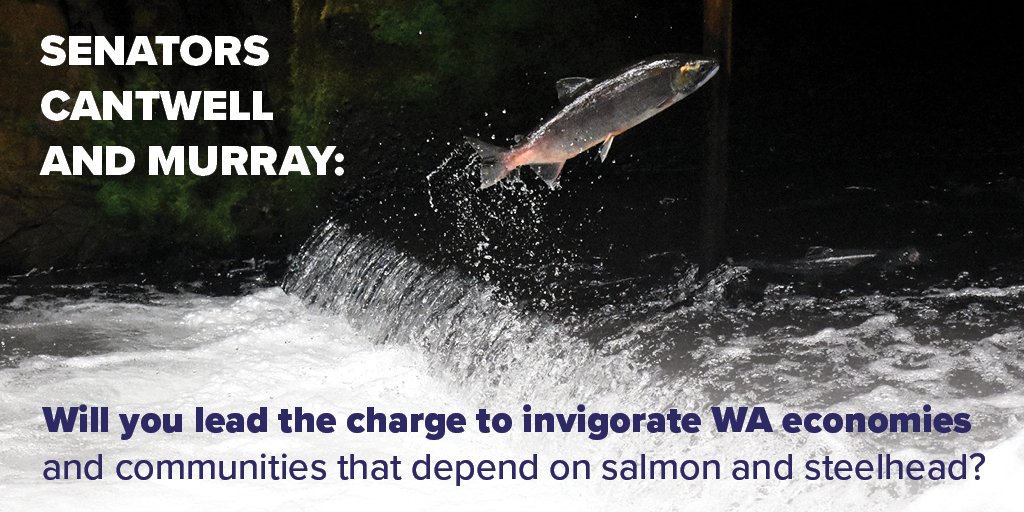
By Bill Arthur, Chair, Snake/Columbia River Salmon Campaign
The orca are doing all they can. The Northwest governors are stepping up. We need our Congressional delegation to support this initiative and provide leadership as well. Please contact your U.S. Senators today!
Take Action!
On October 9th, the Governors of Washington, Oregon, Idaho and Montana released a letter committing to work together to rebuild the salmon and steelhead of the Columbia and Snake Rivers. The agreement is a welcome statement from state leadership to develop solutions for the long-suffering and depleted runs of the Columbia Basin Rivers. It is also good news for the orca who rely on chinook salmon from these rivers for survival.
The fates of Southern Resident orca and Snake River salmon are closely intertwined. Orca rely on chinook salmon from Puget Sound, the coast, and the Snake River as their main source of food. But these fish have become scarce and the whales are starving to death in their absence.
This agreement by the four Governors is a clear recognition that the court-ordered environmental impact statement (NEPA) and the subsequent Biological Opinion (salmon plan) was inadequate. It did not solve the issue or produce a long-term plan that will work for our iconic Northwest species. Indeed, the current plan looks much like its predecessors, all of which have failed to recover our salmon and steelhead and were found inadequate and illegal by the courts.
Due to its inability to restore these depleted and endangered runs of salmon and steelhead, we believe that this current plan is also destined for the courts. The region needs a plan that will recover abundant salmon and steelhead, meet the needs of farm and fishing communities, assure a clean, affordable, reliable energy system, and honor the cultural values and federal treaties with Columbia Basin tribes.
But the news is not all dire, there has been some recent good news for the orca.
First, Tahlequah - the mother orca that drew international attention in 2018 as she bore her lifeless calf through the waters of the Salish Sea - welcomed a new baby last month. And the end of September brought yet another calf to the J-pod. Scientists believe a couple of other females may be pregnant in the other pods. The orca, it seems, are doing all they can to rebuild their community. Now, it’s our turn to step up.
For years, biologists have said that restoring the lower Snake River by removing its four dams is critical to protecting salmon from extinction. It could return over one million adult chinook to Northwest coastal waters to help feed starving orca and provide harvestable numbers for sport, commercial and tribal fishing economies and communities. Orca scientists have also found that orca recovery depends on restoring the lower Snake. This is our greatest salmon – and orca – restoration opportunity anywhere on the West Coast.
While the letter of agreement put forward by the Governors is a step forward, we need to keep the pressure on. The process must prioritize dealing with the Snake River salmon and move forward with urgency. The Governors, as they state in the letter, need to consult with Northwest tribes and bring their leadership to this process so it is a full sovereign and stakeholder process. The Snake River salmon and orca are an urgent priority for everyone in the Pacific Northwest, and we need this stakeholder process to begin at the start of the new year.
The orca are doing all they can. The Northwest governors are stepping up. We need our Congressional delegation to support this initiative and provide leadership as well. Please contact your U.S. Senators today - urge them to actively be involved and support this process to develop a comprehensive solution for our salmon, orca and communities.